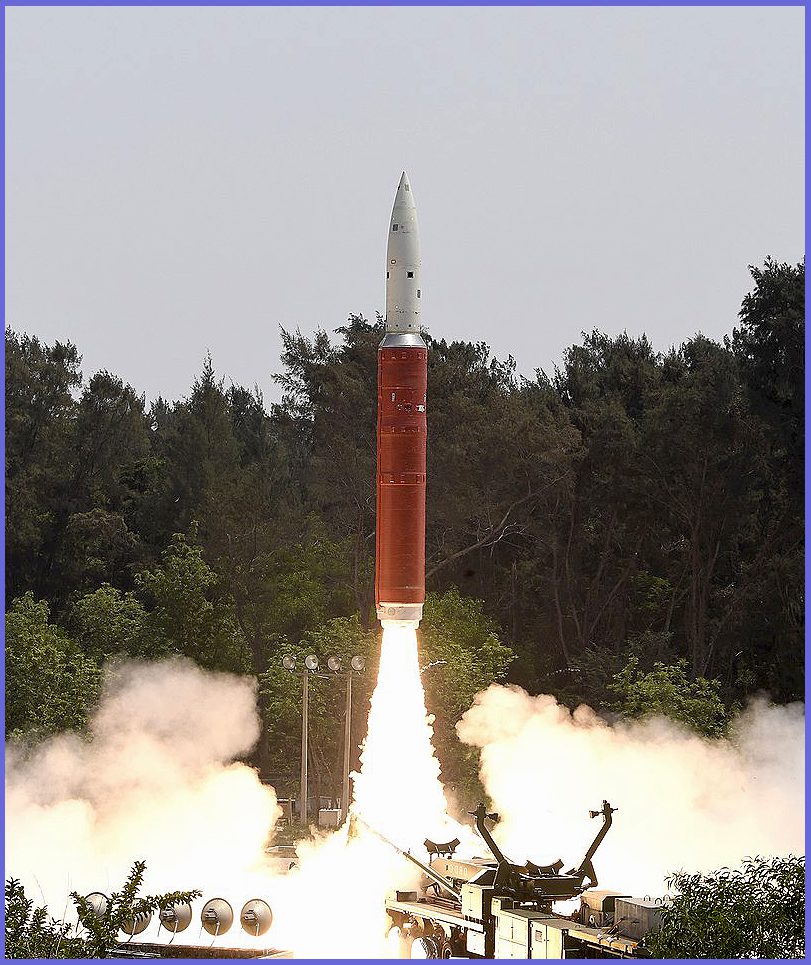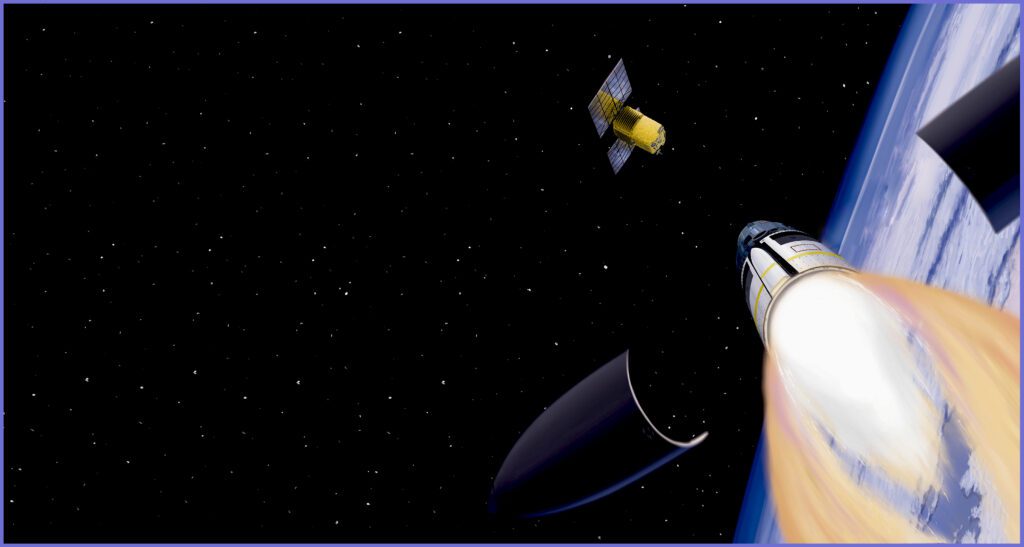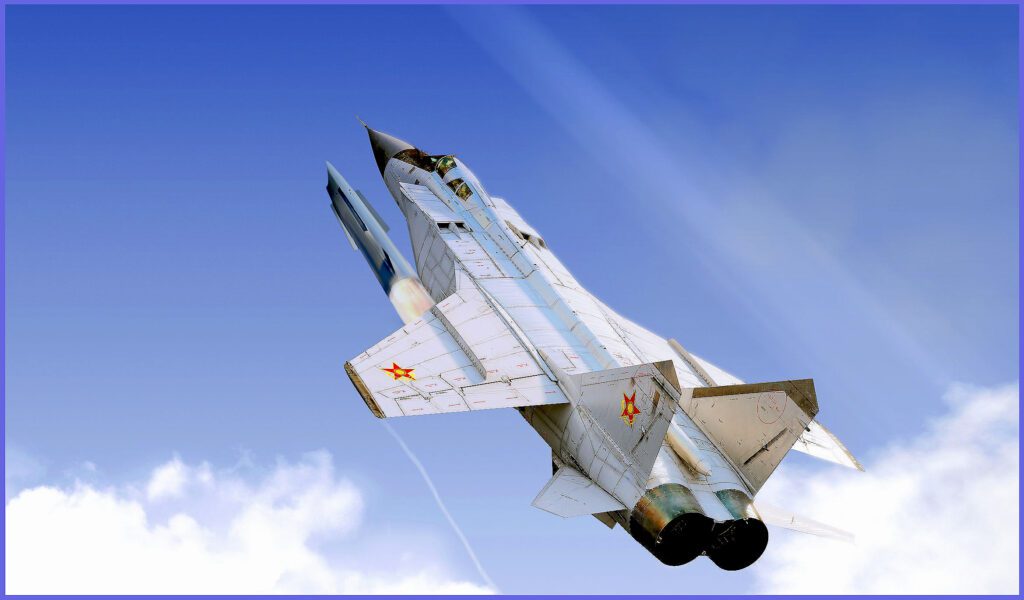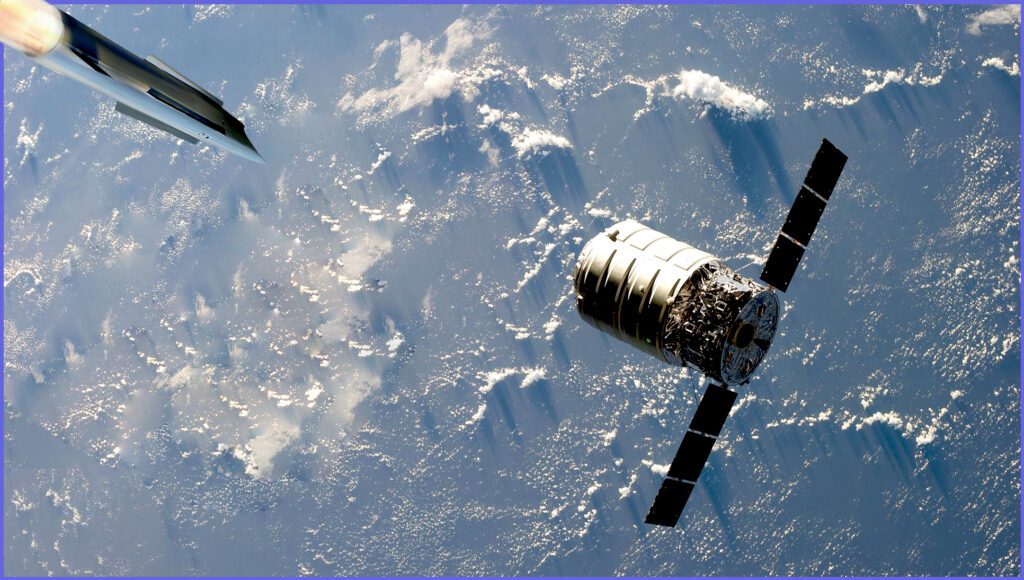The advancements in modern warfare technology, particularly the Development and Proliferation of Anti-Satellite Weapons (ASAT), have reached unprecedented levels. In 2019, India joined the ranks of nations capable of disabling enemy satellites, becoming the fourth country to do so.
This achievement underscores the strategic importance of such capabilities. The development of anti-satellite technology has a long history, with its origins tracing back to the Cold War.
Starting in the 1950s, the United States and the Soviet Union began by using ground-launched missiles. Over the decades, numerous innovative approaches have been introduced. As of 2024, let’s review the evolution of anti-satellite weapons (ASAT).

Countering Threats: The Role of Anti-Satellite Weapons
Anti-satellite (ASAT) weapons are designed to disable or destroy satellites in orbit, serving strategic military and geopolitical objectives. They underscore the importance of controlling space and denying adversaries access to satellite-based information and resources.
These weapons vary widely in technology and deployment methods, ranging from ground-based missiles to directed energy weapons and co-orbital platforms. ASAT capabilities include kinetic kill vehicles that physically collide with satellites, and small explosive warheads designed to disrupt their functionality.

Anti-satellite (ASAT) weapons serve multiple strategic roles, such as defending against an adversary’s space-based and nuclear weapons, enhancing the effectiveness of a nuclear first strike, countering an adversary’s anti-ballistic missile defence (ABM) systems, serving as an asymmetric response to technologically superior adversaries, and functioning as a counter-value weapon.
The development and deployment of ASAT weapons reflect a growing concern over the vulnerability of space-based assets and the potential for adversaries to disrupt critical communication, navigation, and surveillance capabilities.
While no ASAT system has yet been utilized in warfare, countries like the United States, China, Russia, and India have successfully shot down their satellites to demonstrate their ASAT capabilities as a show of force. Additionally, ASATs can be useful for removing decommissioned satellites from orbit.

However, the deployment of ASAT weapons also raises concerns regarding space debris and the long-term sustainability of space operations. Debris created by ASAT activities poses risks to other satellites and spacecraft, potentially causing collisions and further accumulation of space debris.
Overall, the strategy of developing ASAT weapons since the Cold War era represents a significant aspect of military strategy in an increasingly contested space domain, influencing global security dynamics and the future of space governance.

Tracing the Origins: The Evolution of Anti-Satellite Weapons by Country
United States of America (USA)
Since the 1950s, the United States has developed and tested anti-satellite (ASAT) weapons, initially focusing on ground- and air-launched missile interceptors. Research also explored directed-energy weapons, including a 1968 proposal by Lawrence Livermore National Laboratory (LLNL) for an X-ray laser powered by nuclear explosions.
This concept featured a satellite with a stationary laser and deployable mirror for targeting. Despite its innovation, the X-ray laser system was discontinued in 1977.

As part of a “crash program,” the ASM-135 ASAT was developed from the AGM-69 SRAM missile. By 1985, it was integrated into a modified F-15 Eagle, positioned centrally beneath the aircraft.
The F-15’s guidance system was adjusted for the mission, providing directional cues via the pilot’s head-up display and enabling mid-course updates through a data link.
After ascending to 38,100 feet, the aircraft vertically launched the missile. The ASM-135 ASAT successfully destroyed a U.S. gamma-ray spectroscopy satellite in low Earth orbit. Despite this achievement, the program was terminated in 1988.

Another notable test involved USA-193, an American reconnaissance satellite launched in December 2006 from Vandenberg Air Force Base. Approximately a month after launch, reports indicated that the satellite had ceased to function.
In February 2008, the US Navy conducted Operation Burnt Frost, using a ship-fired RIM-161 Standard Missile to destroy the satellite approximately 247 km (153 mi) above the Pacific Ocean.
It was later estimated that the US military documented 174 pieces of orbital debris. Most re-entered Earth’s atmosphere within months, but some remained in higher orbits longer. The final detectable piece of USA-193 reconnaissance satellite debris re-entered on October 28, 2009.
The United States ceased testing direct-ascent anti-satellite missiles in 2022, satisfied with their capability to destroy satellites in orbit.

These developments aimed to maintain strategic superiority in space during the Cold War and beyond, specifically considering the advancements of ASAT weapons by China, reflecting concerns over potential threats to U.S. satellite assets.
Modern U.S. ASAT capabilities have evolved to include advanced technologies such as directed energy and cyber capabilities, reflecting ongoing efforts to safeguard national interests in space.

Union of Soviet Socialist Republics (USSR)
The Soviet Union began developing anti-satellite (ASAT) weapons in the 1960s, driven by Cold War competition with the United States. Their efforts initially focused on co-orbital systems designed to meet and disable enemy satellites.
In March 1961, Soviet defence planners approved the development of an anti-satellite project as part of the Istrebitel Sputnikov (IS) program, which translates to “destroyer of satellites.” This decision came after addressing various defence industry issues.

The IS system was a “co-orbital” design, intended to gradually approach its target and then detonate a shrapnel warhead close enough to disable the satellite. The missile is launched when the target satellite’s ground track is above the launch site.
Once detected, the missile is sent into an orbit near the target satellite. It takes about 90 to 200 minutes, or roughly one to two orbits, for the interceptor to reach its target.
The interceptor, equipped with onboard radar and weighing 1400 kg (3086 lb), was effective in disabling satellites from up to one kilometre away. In 1968, the Soviet Union successfully tested its first co-orbital ASAT system on Kosmos 249, showcasing its capability to intercept and destroy satellites in low Earth orbit.
A total of 23 launches were identified as part of the IS test series, and the system was declared operational in February 1973.

Interestingly, in the early 1980s, the Soviet Union also began developing a counterpart to the US air-launched ASAT system used by the F-15. They utilized modified MiG-31D ‘Foxhounds’, with at least six completed as launch platforms. The program was known as 30P6 “Kontakt”.
As part of ongoing developments, the IS system was upgraded to target satellites at higher altitudes and was declared operational in its new configuration on July 1, 1979. However, in 1983, the fourth General Secretary of the Communist Party of the Soviet Union halted all IS testing indefinitely.

Russia at Present
After the Soviet Union’s dissolution, in August 2009, the Russian Air Force Commander-in-Chief announced the revival of the ASAT program. The Sokol Eshelon, a laser system prototype based on the Beriev A-60 aircraft, resumed development in 2012. In September 2018, a new ASAT missile was observed on a MiG-31.
In November 2021, Russia successfully tested an anti-satellite missile, destroying the Kosmos 1408 satellite, Breaking into more than 1,500 pieces of debris, which can potentially endanger other objects in orbit.

According to reports, Russia has been developing various anti-satellite (ASAT) systems capabilities. These include co-orbital ASAT weapons designed for use in the geostationary orbit, where many military command-and-control satellites are positioned.
Additionally, Russia is exploring ground-based lasers and satellite jamming systems to disrupt and diminish the effectiveness of satellite-dependent weaponry.
Russia’s recent activities have raised alarms, particularly with the development of a new ASAT system reportedly involving nuclear explosives, which could create electromagnetic pulses capable of disabling satellites over a wide area. This development is seen as a violation of the Outer Space Treaty (Arms Control Association)

China (CCP)
China has been developing technologies for Anti-Satellite (ASAT) weaponry since 1964, with significant advancements in recent decades. In 2007, China conducted a widely publicized test using a ground-launched SC-19 ASAT missile equipped with a kinetic kill warhead to destroy one of its non-functional weather satellites, resulting in substantial space debris.
As a result, the detonation alone caused more than 40,000 new chunks of debris with diameters larger than one centimetre, significantly increasing the total amount of debris in orbit.
In February 2018, China tested an exoatmospheric ballistic missile named Dong Neng-3, which has the potential to be used as an ASAT weapon targeting satellites in geostationary Earth orbit.

This test demonstrated China’s capability to target satellites in lower and upper Earth orbit, raising concerns globally about space security and debris mitigation. Since then, China has continued to develop ASAT technologies, including ground-based missiles and co-orbital systems, reflecting its strategic emphasis on space control and countering potential adversaries’ space-based assets.
China continues to expand its ASAT arsenal, despite facing international criticism for its 2007 test that produced long-lasting space debris.

India
In recent history, India’s Defence Research and Development Organisation (DRDO), a research arm of the Indian defence services, developed the ASAT system. In February 2010, the Director-General of DRDO announced that India had acquired all necessary components to integrate an anti-satellite weapon capable of neutralizing satellites in low Earth and polar orbits.
By April 2012, India had acquired critical technologies for its ASAT program, including radars and interceptors developed under the Indian Ballistic Missile Defence Programme.

The ASAT program was officially sanctioned in 2017. In March 2019, India successfully conducted an ASAT test known as “Mission Shakti.” The interceptor successfully targeted and destroyed a test satellite at 300 km (186 mi) in low Earth orbit (LEO), marking India’s first successful ASAT missile test.
The test was intentionally conducted at a low altitude to ensure that any resulting debris would naturally decay and fall back to Earth within a few weeks.
Overall, the test involved destroying a live satellite in low Earth orbit, demonstrating India’s capability to safeguard its space assets and bolster its strategic defence posture. This achievement positioned India as the fourth country, after the United States, Russia, and China, to possess such ASAT capabilities.

India’s ASAT program is viewed as a measure to safeguard its expanding fleet of satellites crucial for communication, navigation, and surveillance. However, the test also sparked international concerns regarding the creation of space debris and the militarization of space.
India has subsequently underscored its commitment to responsible space conduct and has advocated for international norms to prevent the weaponization of space. India asserts that this capability serves as a deterrent and is not aimed at any specific nation while ensuring the protection of its national security interests.

In conclusion, the increasing proliferation of ASAT weapons and the potential for space debris accumulation present severe risks to global satellite operations, affecting everything from military communications to public infrastructure and global economic stability.
These developments emphasize the strategic significance of space control and support efforts to manage ASAT capabilities through international treaties and agreements.
In November 2022, a UN working group issued a resolution urging countries to ban destructive anti-satellite missile tests, reflecting a growing international consensus despite its non-binding status.
By fostering cooperation and setting clear guidelines, the international community can harness the potential of ASAT technologies while safeguarding the peaceful and sustainable future of space exploration for generations to come.
